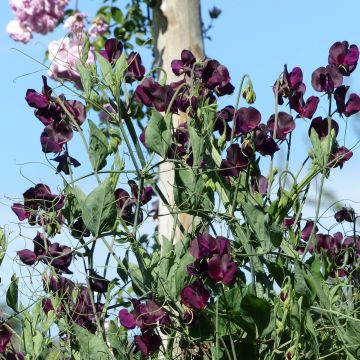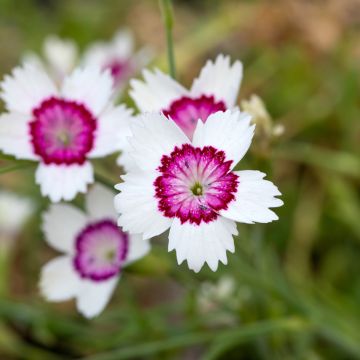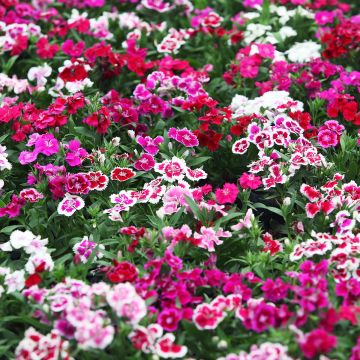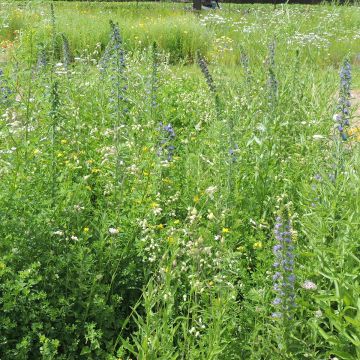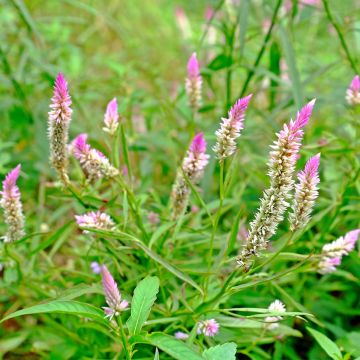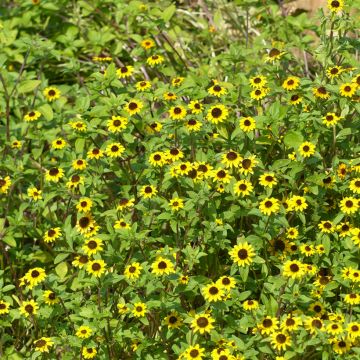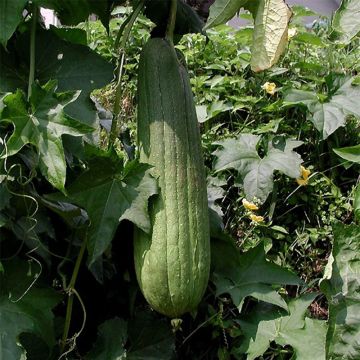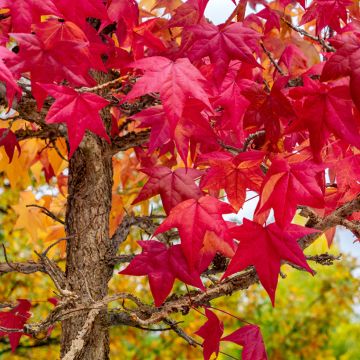

Winter Squash Futsu Black Seeds
Winter Squash Futsu Black Seeds
Cucurbita moschata Futtsu Black
Butternut squash
Special offer!
Receive a €20 voucher for any order over €90 (excluding delivery costs, credit notes, and plastic-free options)!
1- Add your favorite plants to your cart.
2- Once you have reached €90, confirm your order (you can even choose the delivery date!).
3- As soon as your order is shipped, you will receive an email containing your voucher code, valid for 3 months (90 days).
Your voucher is unique and can only be used once, for any order with a minimum value of €20, excluding delivery costs.
Can be combined with other current offers, non-divisible and non-refundable.
Home or relay delivery (depending on size and destination)
Schedule delivery date,
and select date in basket
This plant carries a 6 months recovery warranty
More information
We guarantee the quality of our plants for a full growing cycle, and will replace at our expense any plant that fails to recover under normal climatic and planting conditions.
Would this plant suit my garden?
Set up your Plantfit profile →
Description
The winter squash or Cucurbita moschata 'Futsu Black' is characterized by its deeply ribbed, flattened, rounded fruits that are covered with a thick, warty skin that turns greyish rust when ripe, weighing no more than 1.5 kg each. This unusual appearance hides a tasty, spicy, fruity flesh that is firm, sweet and yellow-orange in colour. It is wonderful in soups, gratins, soufflés, pies and tarts. Easy to grow, this variety is productive and its fruit can be stored for a long time.
Pumpkins, squashes and pumpkins, in Latin Cucurbita, belong to the family Cucurbitaceae. Cucurbita moschata, or winter squash or butternut squash, is native to northern South America. This species requires more heat than other squashes. Its fruits need a hot summer in order for their aroma to develop fully. 'Futsu Black', derived from this species, is an ancient Japanese variety. It is an annual plant that develops very vigorous, trailing or climbing vines, over 2.50 m long that cling onto any support through tendrils. These vines develop roots at the internodes that are capable of rooting where they come in contact with the soil. Its growth is covered with soft hairs. The leaves are large, simple, heart-shaped with 5 rounded lobes and are marked by palmate veins. They are green, velvety and are more or less spotted with light yellow to creamy white. They flower from spring to summer. There are two types of flowers in squashes, female and male flowers. The female flowers can be distinguished from the male flowers by their inferior ovary (located under the flower) forming something like an embryo of fruit. All are made up of large, limp, yellow-orange, funnel-shaped petals. Approximately 6 months after sowing, the female flowers produce many small fruits. Their skin changes from green to beige to rusty ochre and become covered with a grey bloom when ripe. They are carried by a thick peduncle with 5 deep ribs, which widens at the point of contact with the fruit. The flesh is bright orange, thick and of excellent taste quality. The rough, grey-brown, flattened oval seeds retain their germinating power for 4 to 5 years and emerge after a minimum of 9 days.
Sow these winter squash 'Futsu Black' in the spring, under a heated cover. Then plant them in the open ground in a sunny, warm spot in the garden. Harvest once fruits are ripe, in September-October before the first frosts. Their tasty flesh can be used in soups, purées, soufflés, gratins, in sweet or salty pies... It is also appreciated in jams.
Tough-skinned squash can be stored for several months and eaten throughout the winter. Unlike other fruits and vegetables, they need heat for optimum storage. They do not need to be stored in a dark place, so it is best to leave them somewhere where their plump shape can be appreciated.
The gardener's trick: place a slate or tile under the fruit. It will no longer be in direct contact with the ground, preventing it from rotting due to excess moisture. Squashes are particularly fond of slightly moist soil, and our elders sometimes sowed them on an old, well-decomposed manure heap. Remember to mulch around the plants, especially at the height of summer. Squashes are very prone to powdery mildew (a fungal disease that leaves a white powder on the surface of the leaves). Carefully when watering to avoid the leaves or flowers. Combine your squash with alliums such as chives, onions or shallots or with plants from the family Fabaceae such as beans or peas. On the other hand, marrying a squash to a cucumber will be disadvantageous for both parties.
Report an error about the product description
Flowering
Foliage
Plant habit
Botanical data
Cucurbita
moschata
Futtsu Black
Cucurbitaceae
Butternut squash
Cultivar or hybrid
Other Flower seeds A to Z
View all →Planting and care
Early sowing : in March and April, sow your seeds by two or three, in trays or pots, in soil rich in organic matter. Then cover lightly and water to keep the soil slightly moist. Emergence is fairly rapid: after about ten days, thin out seedlings by choosing the strongest, then transplant them in the open ground after having prepared the soil. Each plant requires a lot of space. If possible, space them 1 m apart. Dig holes 20 to 25 cm in width and height and fill two-thirds with garden compost. Then position the plant and fill with the rest of the soil and tamp down vigorously. Make sure there is no shortage of water throughout their growth.
Sowing during the season : once all risk of frost has passed, i.e. at the end of April or May depending on the region, sow in two to three seeds in each hole, at a depth of 2/3 cm. Tamp down lightly, then wait about ten days before the first shoots appear. When they have reached a few cm, thin out, keeping only the sturdiest plants. Make sure that the plants do not run out of water throughout their growth.
Squashes are harvested from late summer to autumn. A simple way to know when it is the right time to harvest is to look at the peduncle or fruit stalk. If it is very dry and the fruit is ready to break off, it's the right time to pick them.
Description of sowing : Sowing squash and courgettes is very rewarding, both for the rapid emergence of the seedlings and for their ease of cultivation. They require well-drained soil that is rich in organic matter. They also require a lot of sunshine and water for the best results in terms of fruit production.
Tough-skinned squash can be stored for several months and eaten throughout the winter. Unlike other fruits and vegetables, they need heat for optimum storage. They do not need to be stored in a dark place, so it is best to leave them somewhere where their plump shape can be appreciated.
The gardener's trick: place a slate or tile under the fruit. It will no longer be in direct contact with the ground, preventing it from rotting due to excess moisture. Squashes are particularly fond of slightly moist soil, and our elders sometimes sowed them on an old, well-decomposed manure heap. Remember to mulch around the plants, especially at the height of summer. Squashes are very prone to powdery mildew (a fungal disease that leaves a white powder on the surface of the leaves). Carefully when watering to avoid the leaves or flowers. Combine your squash with alliums such as chives, onions or shallots or with plants from the family Fabaceae such as beans or peas. On the other hand, marrying a squash to a cucumber will be disadvantageous for both parties.
Sowing period
Intended location
This item has not been reviewed yet - be the first to leave a review about it.
Similar products
Haven't found what you were looking for?
Hardiness is the lowest winter temperature a plant can endure without suffering serious damage or even dying. However, hardiness is affected by location (a sheltered area, such as a patio), protection (winter cover) and soil type (hardiness is improved by well-drained soil).

Photo Sharing Terms & Conditions
In order to encourage gardeners to interact and share their experiences, Promesse de fleurs offers various media enabling content to be uploaded onto its Site - in particular via the ‘Photo sharing’ module.
The User agrees to refrain from:
- Posting any content that is illegal, prejudicial, insulting, racist, inciteful to hatred, revisionist, contrary to public decency, that infringes on privacy or on the privacy rights of third parties, in particular the publicity rights of persons and goods, intellectual property rights, or the right to privacy.
- Submitting content on behalf of a third party;
- Impersonate the identity of a third party and/or publish any personal information about a third party;
In general, the User undertakes to refrain from any unethical behaviour.
All Content (in particular text, comments, files, images, photos, videos, creative works, etc.), which may be subject to property or intellectual property rights, image or other private rights, shall remain the property of the User, subject to the limited rights granted by the terms of the licence granted by Promesse de fleurs as stated below. Users are at liberty to publish or not to publish such Content on the Site, notably via the ‘Photo Sharing’ facility, and accept that this Content shall be made public and freely accessible, notably on the Internet.
Users further acknowledge, undertake to have ,and guarantee that they hold all necessary rights and permissions to publish such material on the Site, in particular with regard to the legislation in force pertaining to any privacy, property, intellectual property, image, or contractual rights, or rights of any other nature. By publishing such Content on the Site, Users acknowledge accepting full liability as publishers of the Content within the meaning of the law, and grant Promesse de fleurs, free of charge, an inclusive, worldwide licence for the said Content for the entire duration of its publication, including all reproduction, representation, up/downloading, displaying, performing, transmission, and storage rights.
Users also grant permission for their name to be linked to the Content and accept that this link may not always be made available.
By engaging in posting material, Users consent to their Content becoming automatically accessible on the Internet, in particular on other sites and/or blogs and/or web pages of the Promesse de fleurs site, including in particular social pages and the Promesse de fleurs catalogue.
Users may secure the removal of entrusted content free of charge by issuing a simple request via our contact form.
The flowering period indicated on our website applies to countries and regions located in USDA zone 8 (France, the United Kingdom, Ireland, the Netherlands, etc.)
It will vary according to where you live:
- In zones 9 to 10 (Italy, Spain, Greece, etc.), flowering will occur about 2 to 4 weeks earlier.
- In zones 6 to 7 (Germany, Poland, Slovenia, and lower mountainous regions), flowering will be delayed by 2 to 3 weeks.
- In zone 5 (Central Europe, Scandinavia), blooming will be delayed by 3 to 5 weeks.
In temperate climates, pruning of spring-flowering shrubs (forsythia, spireas, etc.) should be done just after flowering.
Pruning of summer-flowering shrubs (Indian Lilac, Perovskia, etc.) can be done in winter or spring.
In cold regions as well as with frost-sensitive plants, avoid pruning too early when severe frosts may still occur.
The planting period indicated on our website applies to countries and regions located in USDA zone 8 (France, United Kingdom, Ireland, Netherlands).
It will vary according to where you live:
- In Mediterranean zones (Marseille, Madrid, Milan, etc.), autumn and winter are the best planting periods.
- In continental zones (Strasbourg, Munich, Vienna, etc.), delay planting by 2 to 3 weeks in spring and bring it forward by 2 to 4 weeks in autumn.
- In mountainous regions (the Alps, Pyrenees, Carpathians, etc.), it is best to plant in late spring (May-June) or late summer (August-September).
The harvesting period indicated on our website applies to countries and regions in USDA zone 8 (France, England, Ireland, the Netherlands).
In colder areas (Scandinavia, Poland, Austria...) fruit and vegetable harvests are likely to be delayed by 3-4 weeks.
In warmer areas (Italy, Spain, Greece, etc.), harvesting will probably take place earlier, depending on weather conditions.
The sowing periods indicated on our website apply to countries and regions within USDA Zone 8 (France, UK, Ireland, Netherlands).
In colder areas (Scandinavia, Poland, Austria...), delay any outdoor sowing by 3-4 weeks, or sow under glass.
In warmer climes (Italy, Spain, Greece, etc.), bring outdoor sowing forward by a few weeks.






























